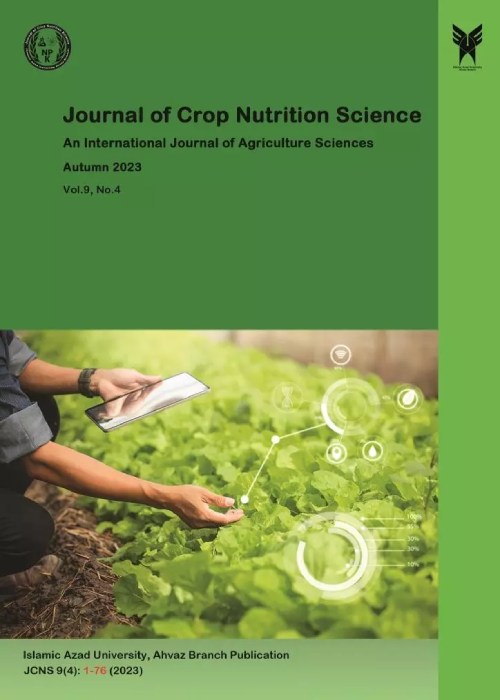Leaf Chlorophyll Changes and Morphological Features of Quinoa (Chenopodium quinoa) Cultivars by P-Zn Ratios in Greenhouse Condition
Author(s):
Article Type:
Research/Original Article (بدون رتبه معتبر)
Abstract:
BACKGROUND
Sufficient nutrients supplying is one of the most important factors in realizing the crops potential performance and achieving high yield, which in conventional agriculture is provided by using chemical fertilizers.OBJECTIVES
This study aims to evaluate the root and shoot structure of quinoa cultivars in response to the phosphorus and zinc sulfate fertilizers application in the Research, Agricultural Education and Natural Resources Center of Khuzestan province.METHODS
The statistical model was factorial based on completely randomized design (CRD) with three factors including the use of triple superphosphate fertilizer at four amounts (0, 6, 12, 18 mg. kg-1 soil weight), foliar application of zinc sulfate in three concentrations (water without zinc sulfate (control), foliar application at 4 and 8 g. L-1 concentrations) and three quinoa cultivars (Giza 1, Q26, Titicaca) in P.V.C pots and in three replications.RESULT
The simultaneous effect of experimental factors on chlorophyll index and shoot morphological traits was significant. Root length to shoot length ratio was affected by the main effect of P2O5 fertilizer and the cultivars differences, and the effect of zinc sulfate was not significant on this trait. In most of the analysed traits, the 4 g. L-1 concentration of zinc sulfate was more effective than the 8 g. L-1 concentration. The total grain weight of the three cultivars was affected by the amount of fertilizer, and the best values of this attribute belonged to the 18 mg. kg-1 triple superphosphate and 4 g. L-1 concentration of zinc sulfate in Q26 cultivar. This trait (TGW) showed the most positive correlation with the plant height, number of lateral branches, stem diameter, and chlorophyll index.CONCLUSION
Based on the results of this experiment, the optimal application of P-Zn ratios by reducing the antagonism effects led to the root and shoot structure development, and increased quinoa cultivars production.Keywords:
Correlation , Oil seed , phosphorus , root density , Zinc
Language:
English
Published:
Journal of Crop Nutrition Science, Volume:8 Issue: 1, Winter 2022
Pages:
1 to 16
magiran.com/p2633871
دانلود و مطالعه متن این مقاله با یکی از روشهای زیر امکان پذیر است:
اشتراک شخصی
با عضویت و پرداخت آنلاین حق اشتراک یکساله به مبلغ 1,390,000ريال میتوانید 70 عنوان مطلب دانلود کنید!
اشتراک سازمانی
به کتابخانه دانشگاه یا محل کار خود پیشنهاد کنید تا اشتراک سازمانی این پایگاه را برای دسترسی نامحدود همه کاربران به متن مطالب تهیه نمایند!
توجه!
- حق عضویت دریافتی صرف حمایت از نشریات عضو و نگهداری، تکمیل و توسعه مگیران میشود.
- پرداخت حق اشتراک و دانلود مقالات اجازه بازنشر آن در سایر رسانههای چاپی و دیجیتال را به کاربر نمیدهد.
In order to view content subscription is required
Personal subscription
Subscribe magiran.com for 70 € euros via PayPal and download 70 articles during a year.
Organization subscription
Please contact us to subscribe your university or library for unlimited access!


